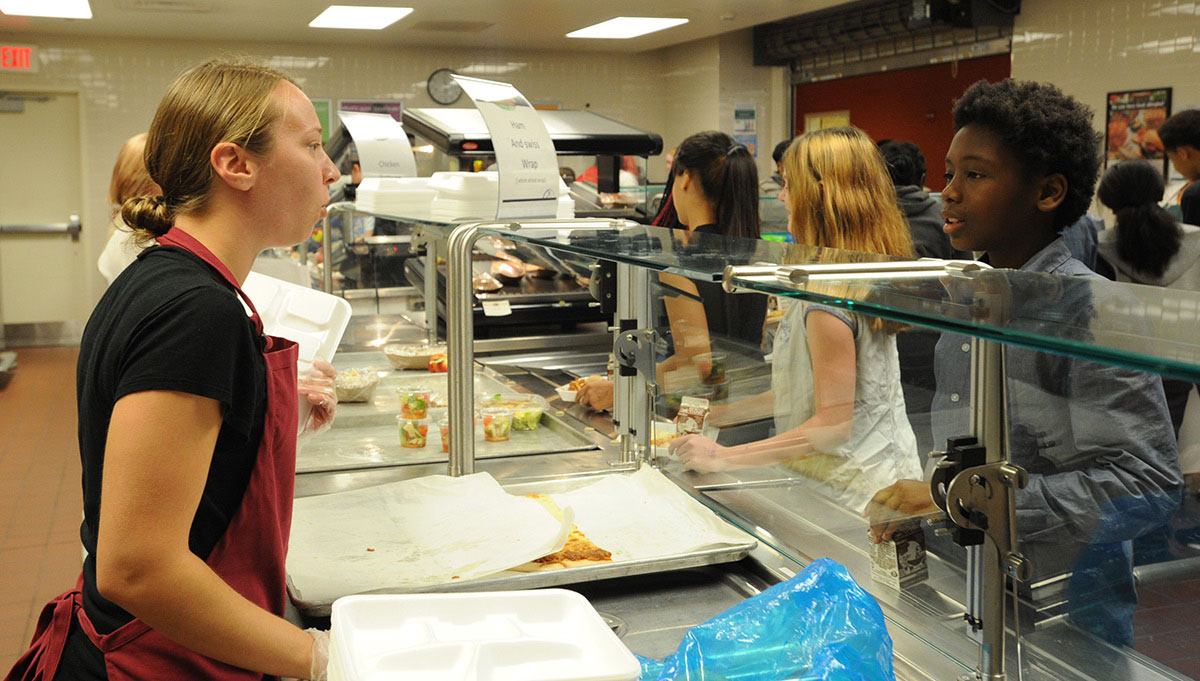The table is set for students, thanks to advocacy
hanks to the continued pressure of NYSUT and child hunger advocates, more kids are getting the food they need to thrive at school.
Two government measures that went into effect this year — the USDA’s decision to reduce the Community Eligibility Provision threshold from 40 percent to 25 percent, and the additional $134.6 million CEP state subsidy in this year’s budget — have given more students across the state the opportunity to receive meals at no cost, and for schools to get fully reimbursed for them.

Kingston City School District began offering free breakfast and lunch to all 5,975 of its students this year. “Children are receiving nutritious meals and now they can focus on things other than hunger. Many of these students come from households that are food insecure most of the month,” said Laurie Rosen, president of the Kingston Teachers Federation. “This also lessens the embarrassment that came along with not having money on their lunch card and parents unable to catch up.”
Rosen said the universal meals have made mealtime more equitable for some of the district’s newest students, too. In the past, many refugees went without meals because their parents had not completed the required paperwork due to immigrant status issues, she said. “There is no more stigma for students because everyone is entitled to the same,” she said.
Students at Owego Elementary School are also enjoying universal free meals now. The school cafeteria offers free breakfast and lunch to all 464 students, and Sandra Phillips, site manager at the school and member of the Broome BOCES Support Services Association, said what happens in the cafeteria is making a difference everywhere else.
“When you’re hungry, you can’t concentrate. Now that they have enough food to eat, they can focus. They’re more comfortable. They can concentrate better and be calm enough to listen to their teachers,” Phillips said.
“The NYS Education Department is thrilled that, with the new Community Eligibility Provision state subsidy in place to cover the funding gap, more eligible schools than ever are providing free school meals to all enrolled students this school year,” said Keshia Clukey, spokesperson for NYSED.
Thanks to the changes, 300 school districts provided free meals at more than 1,100 schools this school year; this is in addition to the 500 districts that already provided free school meals at over 3,000 schools, Clukey said.
The work started back in 2022, when 726,000 New York students suddenly lost their access to free school meals, which had been covered under COVID-era waivers. “We knew we couldn’t take a step backwards,” said Pino-Goodspeed. NYSUT partnered with Hunger Solutions New York and Community Food Advocates for the “Healthy School Meals for All New York Kids” campaign in 2022 and joined the chorus of advocates demanding universal free school meals be included in the FY 2024 budget.
When the threshold was lowered to 25 percent, the state began accepting and processing applications from new schools immediately, Pino-Goodspeed said. “New York State Ed stood this up so quickly. It was very impressive,” she said. Under a waiver from the USDA, districts can use data from April 2023 or October 2023. The application was open until Dec. 15.
Buoyed by their success, NYSUT and other advocates will continue to push for all New York students to have access to free school meals. “We have to finish the job,” said Pino-Goodspeed. Even with expanded Community Eligibility Provisions, as many as 700 schools are expected to be left out of universal meals.
“This was a huge step forward, but just focusing on CEP is not enough. We know that as long as we’re using these arbitrary thresholds, this means testing, we are going to leave kids behind,” she said.
